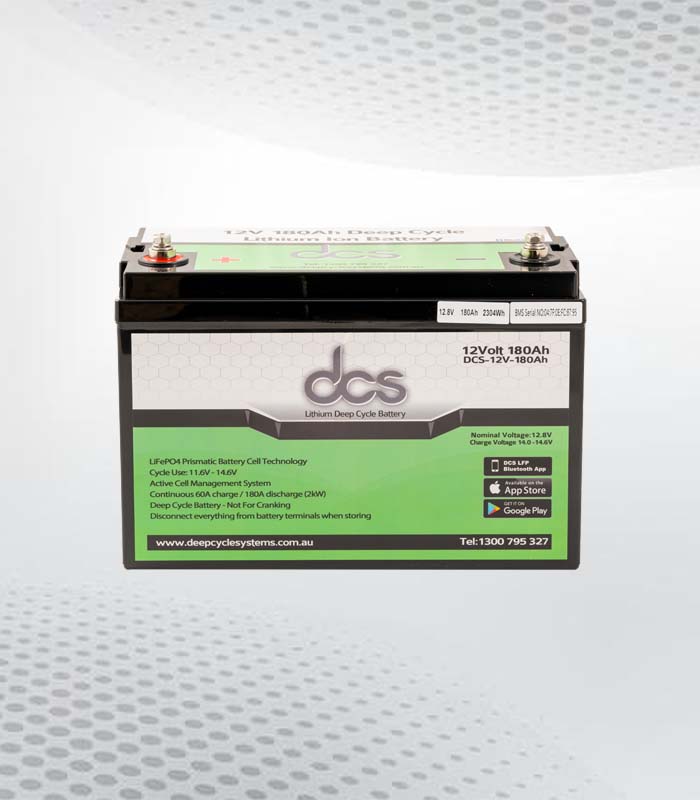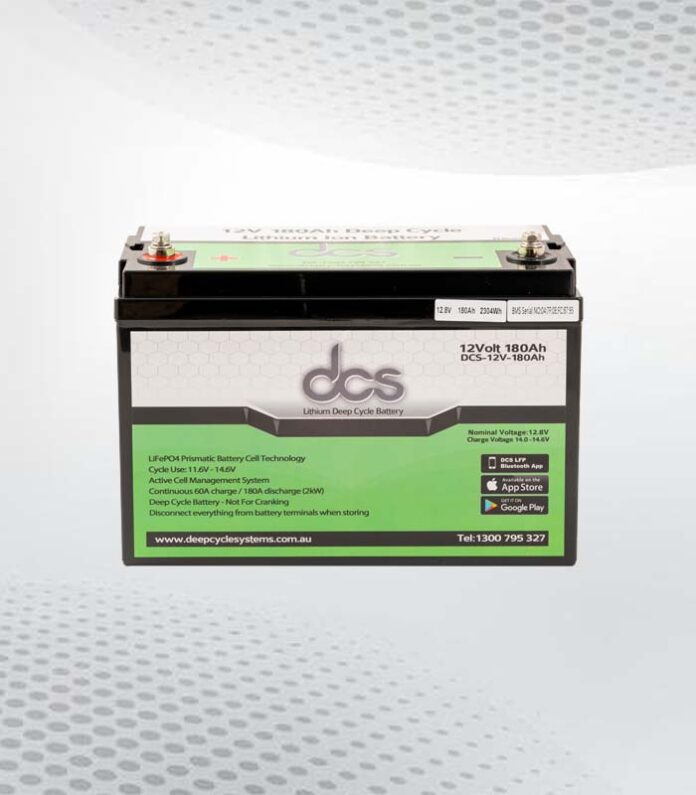With the increasing cost of electricity and the mounting concerns over environmental sustainability, solar power has become an attractive and viable energy alternative. Central to any solar energy system is the storage component, which allows for the harnessing and efficient use of solar energy. Deep-cycle batteries stand out among the different types of solar batteries available due to their longevity, efficiency, and reliability. This guide provides an in-depth look into the deep cycle solar battery, highlighting its importance, performance optimization, charging and discharging, integration into off-grid systems, maintenance, and factors to consider when selecting a battery supplier and brand.
Unlock the Power of Solar: Using a Deep Cycle Battery Solar
If you’ve ever marveled at the impressive longevity of solar-powered devices, there’s a high chance that a deep cycle battery solar was at the heart of that system. These batteries are designed to routinely discharge between 60-80% of their capacity, which are starkly different from your standard car batteries.
Where car batteries are designed to offer short, high-powered bursts of energy to crank your engine before being quickly recharged, deep-cycle batteries are the marathon runners of the energy world. Their power is delivered consistently and efficiently over a prolonged period.
Their tenacity makes them truly indispensable in the realm of solar power. They’re designed to endure the rigours of repeated charging and discharging cycles, ensuring every ray of the sun collected is converted into usable energy.
Think of them as the tireless workhorses powering your transition to renewable energy, offering steadfast performance even as they cycle through extensive charge and discharge phases. The deep-cycle battery isn’t just part of the solar power equation; it’s an instrumental player enabling you to unlock the full potential of solar power.
Optimizing Performance with Deep Cycle Batteries Solar
It is unleashing the full potential of your deep cycle batteries solar. Solar is a game of skill that requires understanding its nuances. It starts with the charge controller, the maestro that conducts your solar panels’ voltage and current symphony. To ensure your deep-cycle battery sings at its highest pitch, your charge controller must be finely tuned according to the battery’s specifications.
Failure to do so can result in the battery singing off-key by overcharging or undercharging, leading to a sharp decline in battery life and performance. Picture a scenario where you’re performing a high-stakes concert. Wouldn’t you want to keep track of the rhythm, tempo, and harmony? That’s where a battery monitor steps in, acting as your backstage manager, keeping you informed about the state of charge, discharge rates, and the overall health of your battery.
Remember, the performance of your deep-cycle solar battery is not a solo act. It’s a coordinated performance, intricately balancing the charge controller’s input and the battery monitor’s oversight. With these two players orchestrating in harmony, you can ensure that your deep-cycle solar battery consistently delivers an ovation-worthy performance.
 Charging and Discharging of Deep Cycle Solar Batteries
Charging and Discharging of Deep Cycle Solar Batteries
Just like you need to balance work and rest to keep going, Deep Cycle Solar Batteries require a balanced regime of charging and discharging to stay healthy and efficient. Overcharging the battery is like pushing it into an intense workout without rest, leading to excessive gassing or heat and, eventually, a complete breakdown known as thermal runaway.
On the other hand, undercharging the battery is akin to not giving it enough fuel to work, leading to a condition called sulfation that significantly lowers its capacity and lifespan. It’s as if you’re running a marathon on an empty stomach. Eventually, you’re going to hit a wall.
So, how do we maintain this balance? Enter the charge controller, your battery’s trainer, ensuring that the battery gets a balanced regime of charging and discharging, staying within optimal ranges. A high-quality charge controller is pivotal in this role, preventing over-exertion or under-fueling of the battery.
Incorporating Deep-Cycle Batteries into Off-Grid Systems
Deep-cycle batteries are the lifeline for off-grid solar systems that keep the power flowing even when the sun plays hide and seek. The trick here is to ensure your deep-cycle battery has enough capacity to support your appliances during those longest expected sunlight-free stretches.
A little arithmetic goes a long way here: sum up the watt-hours all your appliances gulp down, then multiply by the number of sunless days you plan. Now divide this by the voltage of your battery, and voila! You have the required capacity of your battery. Remember, an off-grid system doesn’t have the luxury of switching to grid power on cloudy days, making the role of your deep-cycle battery all the more critical.
So, whether setting up a remote cabin or just wanting to be completely energy-independent, getting the battery capacity right will mean the difference between reliable, round-the-clock power and an annoying, intermittent power supply. Don’t stop running the numbers; your solar-powered peace of mind will be well worth it!
Maintenance Tips to Prolong the Life of Your Deep-Cycle Solar Battery
Think of your deep-cycle solar battery as an investment that requires your attention and care to yield its full return. Keeping up with regular maintenance can be compared to nurturing a seed; it allows your battery to grow into a strong, reliable source of energy that can power your solar journey for years to come.
It would be best if you regularly inspected electrolyte levels, only topping them with distilled water when necessary. Remember, electrolyte balance is key to a battery’s health; too much or too little can lead to poor performance and a shortened lifespan.
Keeping the battery terminals clean and corrosion-free is like providing your battery with a clean, obstruction-free path to deliver its power. Corrosion is the nemesis of any connection, causing resistance and power loss, so make sure you keep those terminals squeaky clean.
Finally, let’s talk about temperature. Batteries can be sensitive to heat and cold, and moderate temperatures provide the ideal operating environment for your deep-cycle solar battery. So, shield your battery from extremes; treat it with the same comfort you’d want for yourself.
By implementing these maintenance steps, you’re not just prolonging the life of your battery; you’re safeguarding your investment, ensuring that every dollar spent on your solar system continues to light up your world day after day.
The Role of Deep Cycle Batteries for Solar Power
Deep Cycle Batteries for Solar Power also serve a crucial role in your solar energy system. Their design and construction provide a steady and sustained power supply, ensuring your solar system operates smoothly even when the sun isn’t shining.
Navigating the sea of deep-cycle solar battery options can feel like finding a lighthouse in a storm. There’s no shortage of options, but understanding the differences can help illuminate the best choice for your needs. Flooded lead-acid batteries are the field veterans, tried and tested over time, yet require frequent maintenance and ample ventilation. Sealed lead-acid batteries offer a maintenance-free alternative with a slightly higher price tag.
The AGM (Absorbent Glass Mat) variety ups the ante with superior performance and shock resistance but requires a deeper pocket. Lithium-ion batteries are the new kids on the block, boasting high efficiency and a long lifespan, but their initial cost can cause a bit of sticker shock. The key is to match your needs and budget with the strengths of these battery types.
Selecting the Best Deep Cycle Solar Battery Brand
Think of choosing the best deep cycle solar battery brand as picking the star player for your solar power team. They’ll be the ones to bring the game home with every sunrise, rain or shine. Brands such as Trojan, Battle Born, and Renogy are like the seasoned players in the league. They’ve shown their prowess with a record of reliability and high-quality performance.
However, your solar energy system’s MVP might differ from your neighbour’s. The standout player will depend on what your solar power game strategy is, what constraints you’re playing within, and the specific rules of your solar energy field. So, keep sight of your game plan when you’re in the thick of this battery-selection game.
Remember the nuances of your solar power needs, budget, and system specifics. Please select based on the brand’s reputation and how well it aligns with your unique solar energy goals. It’s all about assembling a team to hit home runs on your solar power field. So, pick your star player wisely, and enjoy the game of solar power to the fullest.
The Importance of Solar Battery Supplier
Think of your solar battery supplier as your co-pilot in your journey towards solar power. It isn’t just about picking up and installing a battery; it’s about forming a partnership that can guide you to efficient, reliable solar power. The role of a reputable supplier extends beyond the transaction of selling you a battery.
They can be the compass to help you navigate the solar power landscape, providing expert advice tailored to your unique energy needs and system specifications. But the support doesn’t end there; consider after-sales service and warranty as the safety nets they offer, providing security and confidence in your investment.
Your supplier is also your solar power teacher, enlightening you on the correct installation, operation, and maintenance procedures to help your deep-cycle battery deliver its best performance. So, just as you’d scrutinize your deep-cycle solar battery before purchase, scrutinize your supplier.
FAQS
Can You Use Car Batteries Instead Of Deep-Cycle Batteries for Your Solar System?
Technically, yes, but it’s like using a sprinter to run a marathon. Car batteries aren’t designed for the long-haul, repetitive charging and discharging of solar applications.
How Frequently Should You Inspect Your Battery’s Electrolyte Levels?
Ideally, once a month. Consider it a monthly health check-up for your battery, which is crucial for keeping it in optimal shape.
Why Not Just Buy The Cheapest Battery Available?
As with most things in life, you get what you pay for. Lower cost often translates to a shorter lifespan or subpar performance. Think of it as an investment, not just a purchase.
Can You Mix Old and New Batteries in A Solar System?
Mixing batteries of different ages, types, or capacities can cause imbalances and impair your system’s performance. It’s like trying to dance in mismatched shoes, which could be better. Remember, there’s no such thing as a silly question when mastering your solar power system. The more you know, the more power you can harness, literally and metaphorically! So, keep the questions coming and let’s keep learning together!
Conclusion
Stepping into the world of solar energy is an empowering journey. At its core, the dependable deep cycle solar battery is your ticket to unlocking solar power’s full potential. This steadfast energy ally thrives on long bouts of charging and discharging, perfect for solar applications. Its unique qualities make it a star player in your solar power team, ensuring energy is stored efficiently and used when you need it the most. By delving into the workings of this game-changer and mastering its operation and maintenance, you can elevate your solar energy system to new heights of efficiency and reliability.
| Other Good Articles to Read |
| skank blogs |
| unreal blogs |
| tba blogs |
| all city forums |
| dany blogs |
| refuge blogs |
| the music blogs |
| key forums |
| the big blog theory |
| joe blogs |
| blogs 4 me |
| Blogs Emon |
